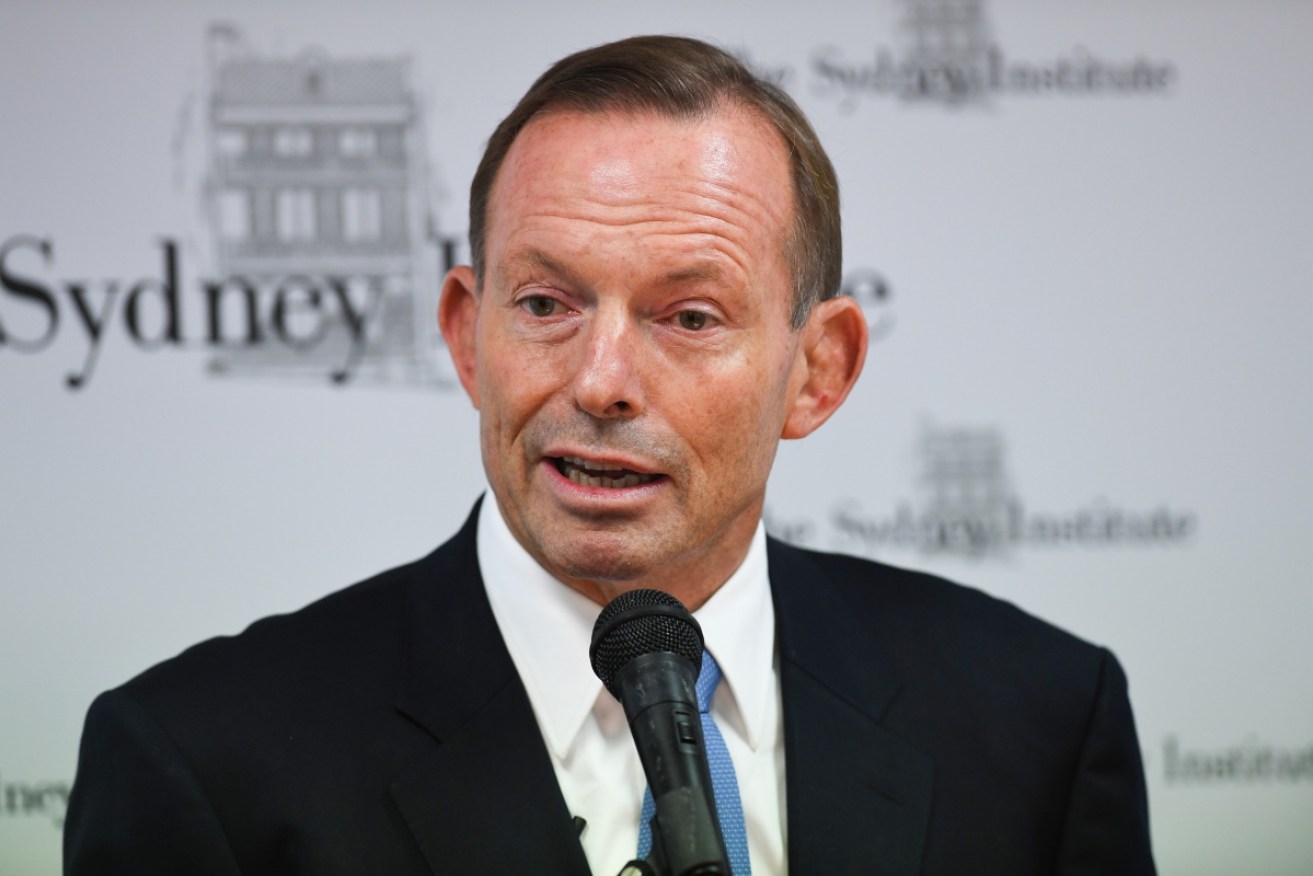Tony Abbott has his immigration numbers wrong


Former PM Tony Abbott has exposed his own tendency to shoot first and question later. Photo: AAP
Former prime minister Tony Abbott’s escalating war of words with his own party over the economic merits of cutting immigration are based on faulty numbers.
On Tuesday, Mr Abbott wrote on Facebook that he “never accepted the Treasury orthodoxy that more migrants meant more growth and a stronger budget outcome” and criticised Mr Morrison for not having “the gumption to think for himself”.
Mr Morrison previously cited Treasury estimates that cutting net overseas migration from 190,000 to 110,000 would cost the federal budget $4 billion to $5 billion a year – a position backed by Finance Minister Mathias Cormann, Trade Minister Steve Ciobo, and Immigration Minister Peter Dutton.
In fact, the figures Mr Abbott has started the debate with are out of date. He is quoting the Bureau of Statistics figure for the year to June 2016.
However, director of migration statistics at the ABS, Myles Burleigh, directed The New Daily to the most recent figure, to June 2017, which was 245,400.
That both helps and hurts Mr Abbott’s argument.
On the one hand, he can claim that net migration is booming back towards the peak level seen in 2012-13 which was just short of 300,000.
On the other hand, the economic benefits foregone from slashing migration from 245,400 to 110,000 would be even larger – that is, a bigger subtraction from GDP, GDP per capita and government tax revenues.
What constitutes migration?
There is a lot of confusion about ‘net overseas migration’ because it is measured several ways.
Department of Immigration and Border Protection (DIBP) figures tend to be higher than the ABS figure, because they include people on relatively short-stay visas. Their latest forecast for the current financial year was 225,000, but that’s clearly no longer relevant.
The ABS instead counts a person as a resident if they are here for 12 out of 16 months – a measure that picks up most students but not, for example, a student that lives in Australia for one university semester.
There is also some confusion around the types of visas people are here on, because many people switch between visa types while in Australia, according to ANU demographer Professor James Raymer.
Nonetheless, breakdown of arrivals and departures in various visa categories are published by both DIBP and the ABS – and they are similar enough to give a decent idea of who’s coming here.
The largest category by far is student visas. That goes a long way to explaining Mr Morrison’s position because the earnings from ‘education exports’ are now so large that they sometimes overtake iron ore export earnings.
Another key category is the temporary skilled visa, or 457 visa. ABS figures show at the peak of the mining investment boom those visas peaked at 126,348 but is estimated to have fallen to 14,654 this year due to a Coaltion government crackdown on their over-use. (DIBP estimates that figure at 21,800).
The key to understanding the immigration debate is much more about understanding the mix of migrants, and balancing the economic gains of a more skilled workforce, or those huge volumes of university fees, with any pressure they might create on housing, employment, healthcare resources and so on.
Where does that balance lie? Probably around about the figure Mr Abbott has used to start this debate – 190,000 or so – but certainly not the 110,000 he wants to cut it to.
The updated figure of 245,400 is a huge jump in one year, so Mr Morrison needs to pay more attention to concerns in the community that infrastructure is struggling to keep up with population growth, especially in Melbourne and Sydney.
That is a failing of state and federal governments. As I wrote a year ago “in the short-term immigration levels will need to be cut. But in the longer-term we need to stop blaming willing, hard-working, would-be migrants for the policy failings of Canberra”.
A sensible ‘cut’ is not a ‘slash’ – and thankfully the Turnbull government frontbench has had the good sense to slap down the Abbott proposal.
Mr Morrison is right that high-ish levels of migration are a net positive for Australia – not only in gross domestic product, but in per capita terms.
That’s due to the import of skills which help boost productivity, but also from those huge education export revenues.
As the table above shows, there really are no easy immigration cuts that would not either rile voters or harm the economy.









